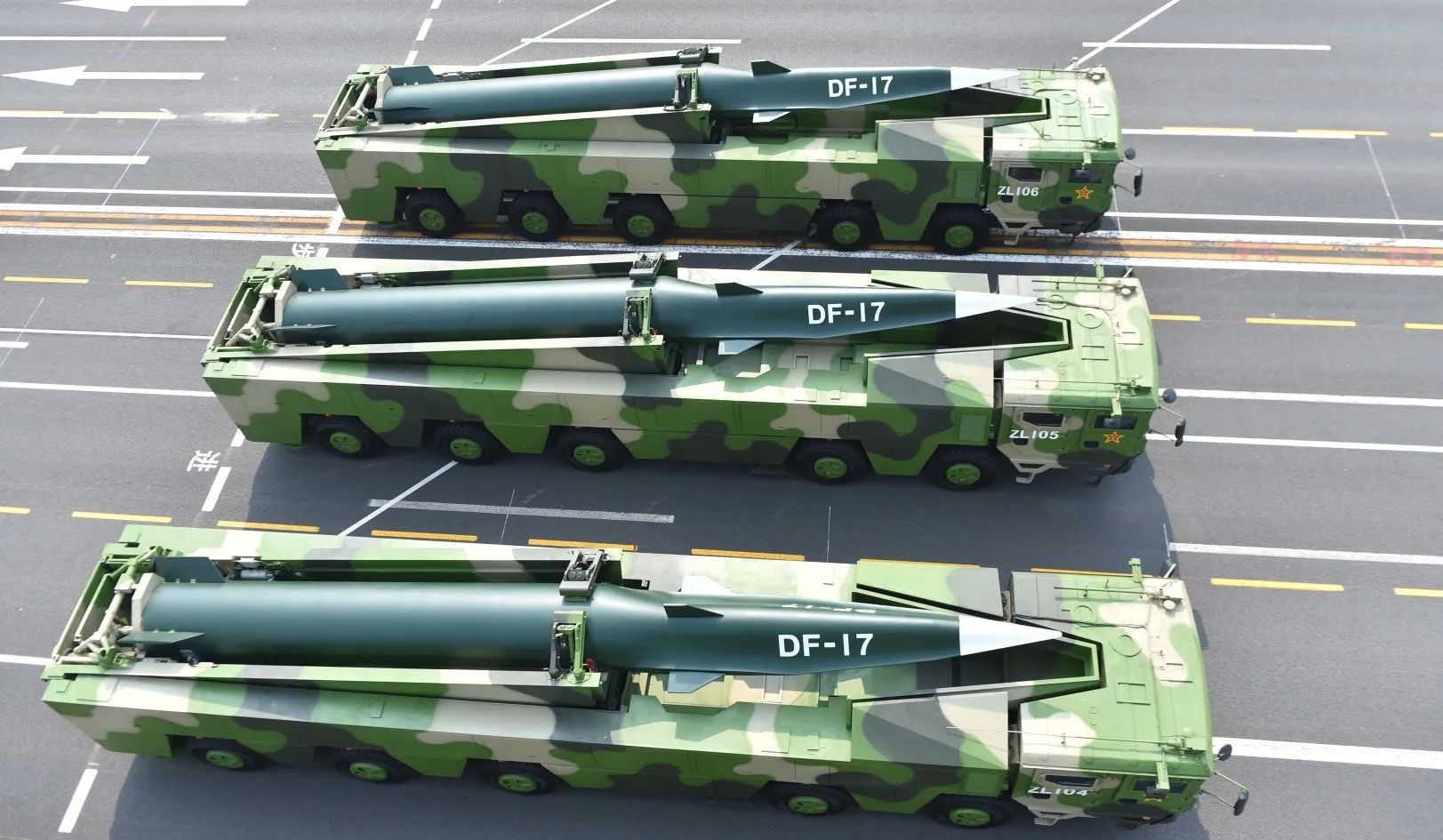In a startling revelation, a Congressional Commission disclosed that China is rapidly advancing towards achieving nuclear parity with the United States and Russia, with a target set for the mid-2030s.
Designed For Su-57s, Russia’s RVV-MD2 ‘Dogfight’ Missile Makes 1st Appearance At Dubai Air Show
The Pentagon has been closely monitoring China’s nuclear activities, and officials have regularly voiced their concerns about the lack of transparency surrounding the extent of China’s nuclear arsenal.
On November 15, the Commission on the Strategic Posture of the United States told US lawmakers that the magnitude and pace of China’s nuclear weapons buildup is ‘unprecedented’ and ‘very surprising.’
At present, the US and Russia are believed to have around 5500-6000 nuclear weapons with about 1600 active deployed strategic nuclear warheads, according to estimates by the Federation of American Scientists.
The commission has further asserted that China should no longer be considered a “lesser included threat” on the global strategic stage.
The commission’s final report, released in October, expressed concerns about the global nuclear landscape, warning of a potential tri-polar atomic world.
The report also underlined the US’s lag in nuclear systems and emerging technologies, noting the country’s need to catch up.
While China has consistently underlined its commitment to a “minimum deterrence” policy, the recent developments raise questions about the true nature of its nuclear ambitions.

Western analysts fear that achieving nuclear parity with the US and Russia could grant China a more assertive position in international affairs.
Meanwhile, Russia has made significant progress in strategic nuclear modernization, deploying unconventional weapons with no US equivalents, such as “tsunami” weapons capable of inundating coastlines.
Therefore, the report stressed the necessity for the US and its allies to be ready to deter or confront Russia and China concurrently, given the perceived escalation in potential conflicts.
However, it lamented the absence of a comprehensive strategy to address the impending dual nuclear-peer threat and the insufficiency of the current force structure.
The commission urged comprehensive planning and readiness for an increasingly challenging future while strongly advocating for diplomatic and whole-of-government efforts to reduce tensions and ensure strategic stability.
Yet, in light of Russia’s withdrawal from nearly all arms treaties with the US and China’s reluctance to engage in strategic arms talks, the prospects for agreements on nuclear arms control have significantly diminished.
The report acknowledged the challenging outlook while emphasizing the importance of exploring all potential opportunities for arms control, strategic stability talks, military dialogues, and confidence-building measures.
Highlighting non-nuclear capabilities, the commission emphasized deploying a more robust space architecture. It will ensure the US and its allies remain at the forefront of emerging technologies, including big data analytics, quantum computing, and artificial intelligence. This will avert strategic surprises and potentially bolster the US’ strategic posture.
China’s Growing Nuclear Arsenal
Beijing’s military modernization is advancing swiftly, positioning itself as a global power across the Pacific and beyond. The implications of China’s rapid nuclear expansion are far-reaching, as it not only poses a challenge to the United States but also alters the global nuclear balance.
The US military, as outlined in a recent Pentagon report on China’s military capabilities, has indicated that China possesses over 500 operational nuclear warheads. The mentioned figure exceeds previous estimates.
Additionally, the Pentagon argued that China may be in the early stages of exploring the development of conventionally-armed long-range missiles with the potential to reach the United States.
As a result, Beijing’s expanding nuclear arsenal has become a significant cause for concern, particularly as it escalates aggressive actions in the Indo-Pacific, posing threats to US regional allies.
The new report from the Congressional Commission points out the necessity for Washington to address the requirement for more theater nuclear weapons in the Indo-Pacific region.
The report further stresses the importance of compensating for any potential deficiencies in the US and the allied non-nuclear capabilities in the event of a sequential or simultaneous two-theater conflict involving Russia and China.
China strategically employs its military strength to assert sovereignty claims, extending from the South China Sea to areas like Taiwan.
Throughout 2022, the Chinese military intensified its aggressive maneuvers directed at the independent island of Taiwan, involving ballistic missile overflights, military aircraft entering Taiwan’s aerial identification zone, and large-scale exercises near the island.
Despite Chinese President Xi Jinping expressing a desire for the peaceful unification of Taiwan with China, the potential use of military force to achieve this goal has not been ruled out.
Moreover, the aggression extends beyond Taiwan and neighboring countries, as Chinese military pilots have increased their “coercive and risky” behavior against US military aircraft flying over the East and South China Seas in the past two years.
- Contact the author at ashishmichel(at)gmail.com
- Follow EurAsian Times on Google News